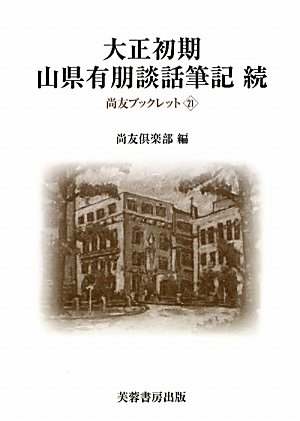1 0 0 0 策府
- 著者
- 小川弘 旗野十一郎編
- 出版者
- 漆山類治
- 巻号頁・発行日
- 1884
1 0 0 0 山縣公遺稿・こしのやまかぜ
1 0 0 0 大正初期山県有朋談話筆記
1 0 0 0 大正初期山県有朋談話筆記 . 政変思出草
- 著者
- 伊藤隆編 . 入江貫一 [著] 伊藤隆編
- 出版者
- 山川出版社
- 巻号頁・発行日
- 1981
1 0 0 0 山縣公遺稿・こしのやまかぜ
1 0 0 0 山縣公遺稿・こしのやまかぜ
1 0 0 0 經濟問題論争
- 著者
- 高橋是清 山縣有朋[著]
- 出版者
- 千倉書房
- 巻号頁・発行日
- 1936
- 著者
- 和田 英一 藤本 圭一郎 沖田 耕一
- 出版者
- 一般社団法人 日本航空宇宙学会
- 雑誌
- 日本航空宇宙学会誌 (ISSN:00214663)
- 巻号頁・発行日
- vol.63, no.9, pp.301-307, 2015
有人宇宙輸送システムは,そもそもハザードを発生させないことが最も重要である.しかしながら,100%の安全が保証されるシステムは存在しない.したがって,ハザードはある確率で発生するものとして,ハザード発生時に宇宙船を守る技術が必要となる.この安全上重要な技術のひとつがアボートシステムであり,ハザードが発生し,クルーの生存が脅かされる事態となった際に,運用を中断し,クルーを無事に離脱・帰還させるためのシステムである.本稿では,アボートシステムのうち,特にクリティカルなハザードである有人ロケットの爆発に対して飛行士の安全を確保する技術について論じる.
1 0 0 0 PCA-EセメントレスTHAにおけるクラスターカップの短期成績
- 著者
- 重田 麻紀子
- 出版者
- 青山学院大学
- 雑誌
- 会計プロフェッション (ISSN:18809502)
- 巻号頁・発行日
- no.8, pp.117-136, 2012
<p><i>Macarostola</i> 属は,インド~オーストラリア区から26 種が知られ,成虫の前翅は鮮やかな橙赤色の地に白や黄色の斑紋をもち,美麗種を多く含む.幼虫は日本産種を除き,フトモモ科の植物を利用する.日本では,ベニホソガ <i>M.japonica</i> Kumata, 1977(寄主植物:ゴンズイ,ミツバウツギ科)の1 種のみが知られていた.しかし,De Prins and De Prins (2016)は,ウェブサイト上にレンブ(フトモモ科)から得られた日本産本属の標本写真を本属の一種 <i>M.zehntneri</i> (Snellen, 1902)として掲載した.吉安は,2016年3 月に沖縄島において野生化したフトモモ(フトモモ科)からベニホソガ属の幼虫を採集した.羽化した成虫と大阪府立大学所蔵標本を検討した結果,前翅の斑紋の特徴から <i>M. zehntneri</i> と同定した.雌雄交尾器を初めて図示し,分布と寄主を追加するとともに,これまで報告のなかった幼虫の潜孔,マユの写真を図示した.幼虫は初め,葉にナメクジの這ったような細い潜孔を作り,その後潜孔を脱出し,葉を円錐形に巻き内部を摂食する.老熟すると巻いた葉から脱出して葉縁を強く折り曲げて細長いマユを紡いで蛹室を作り,その中で蛹化した.また,ミトコンドリアDNAのCOI 領域の一部(DNA バーコード領域)の配列(658bp)を決定し,遺伝距離を比較した結果,同属の他種(<i>M.japonica</i>, <i>M. ida</i>)と明確に区別でき、最も近かったのはオーストラリアの学名未決定種であった.</p><p>フトモモベニホソガ <i>Macarostola zehntneri</i> (Snellen, 1902)(和名新称)(Figs 1-4)</p><p>開張8-10 mm.前翅の斑紋は,翅頂の2 つの黒色斑紋,後角部にL字形の白色斑紋を除き,6 ないしは7 つの黄色の斑紋をもつ.原記載では前縁の黄色斑紋は3 つであるが, 日本産ではしばしば第一斑紋が2 つに分かれる.日本産のベニホソガ <i>M. japonica</i>は,頭部が橙赤色,黒色斑紋を持たない,前縁の斑紋が白色,雄交尾器のバルバはより丸みを帯びる,雌交尾器の1 対のシグナは短く,同じ長さであるなどの点で本種と識別できる.幼虫は,両種とも葉を円錐形に巻くが,ベニホソガでは,ミツバウツギ科のゴンズイを利用し,葉縁を折らないでボート形のマユを葉上に作る.</p><p>寄主植物:フトモモ,レンブ(フトモモ科),国外ではフトモモ(新記録),レンブ,同属の <i>Syzygium cumini</i> が知られる.</p><p>分布:日本(新記録):沖縄(沖縄島,石垣島);国外では台湾(新記録),インドネシア,インド.</p>
- 著者
- 西原 博史
- 出版者
- 早稲田大学社会科学部学会
- 雑誌
- 早稲田社會科學研究 = The Waseda journal of social science (ISSN:02861283)
- 巻号頁・発行日
- vol.40, pp.195-289, 1990-03
論文
1 0 0 0 OA 良心の自由-基本的人権としての良心的自律可能性の保障-
1 0 0 0 OA 使用済み太陽光発電パネルのガラス再資源化による環境負荷削減効果
- 著者
- 湯淺 和博 鶴崎 敬大 山崎 成
- 出版者
- 日本建築学会
- 雑誌
- 日本建築学会環境系論文集 (ISSN:13480685)
- 巻号頁・発行日
- vol.82, no.741, pp.949-955, 2017 (Released:2017-11-30)
- 参考文献数
- 16
The demands of photovoltaic generation (PV) are increasing as the public eco-awareness grows, but there is concern of enormous volume disposal of PV panels in the near future. It is calculated by Ministry of the Environment that if the PV panels life expectancy were 25 years, its final disposal amount reaches 800,000 ton in 2040. And its disposal amount is equivalent to 6% of the present final disposal amount of whole Japan. Considering the load to future's final disposal site, its influence can't be ignored any more. For this reason, some companies are already working to develop the recycling method of PV panels in Japan. However, details of its reductive effect of environmental load is not so certain. So the purpose of this study is to uncover the reduction in CO2 emissions by the recycling of PV panel's glasses (main constituent materials of PV panels are glasses which accounts for more than 50 % by the weight ratio.) through the inventory analysis. At first, we carried out hearing survey on PV panels disposal service vendors, recycled products manufacturers and so on, in order to grasp component materials of PV panels (5 kinds of PV panels were targeted in this research), manufacturing process of recycled products, specification of prosessing apparatus, etc. Then we set two flow charts based on hearing survey. First are proposal procedures that are processes of PV panel's glasses recycling to ceramic tiles, paving blocks, and sound proof panels. Second is currently procedure as a comparison that is process of PV panels recycling to roadbed materials (we also considered that currently procedure is landfill disposing without PV panel's glass recycling). We calculated respective procedure's CO2 emissions per PV panel ton treatment by the inventory analysis. The followings are the main findings of this study: ·Each of PV panels are composed of different materials ratio, so there are difference of reduction in CO2 emissions between respective PV panels. ·At the time of recycling to ceramic tiles, it was confirmed that the fuel consumption in the baking process can be reduced 33 % by using glass, not a natural raw material like a feldspar. Therefore, the substantial CO2 reduction effect was suggested. ·Recycling to ceramic tiles, paving blocks and sound proof panels using glass of PV panels gave more than 10 % CO2 reduction ratio, even when any PV panels were subjected. It was the case when CIGS PV panels are recycled to sound proof panel that the CO2 reduction ratio becomes biggest, and its CO2 reduction ratio was 61%. ·We showed that which productization or occasion of PV panel kinds are able to get the amount of CO2 reduction beyond 140kg-CO2. It was the case when CIGS PV panels are recycled to ceramic tiles that the amount of CO2 reduction becomes biggest, and its amount of CO2 reduction was 441.6kg-CO2. ·Amount of CO2 reduction didn't become substantial minus effects in the comparison even when the currently procedure is landfill disposing. Combined with the volume reduction of final waste, it is suggested that PV panel recycling reads to significant reduction of environmental load.

